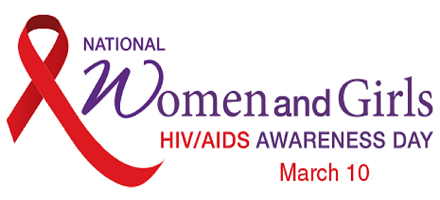Letters from the Director: National Women and Girls HIV/AIDS Awareness Day

On March 10 each year, the Department of Health and Human Services Office on Women’s Health (OWH) leads the National Women and Girls HIV/AIDS Awareness Day (NWGHAAD). This Awareness day brings local, state, federal and national organizations together to shed light on the impact of HIV infection on women and girls, and to show support for women and girls who are at risk of or living with HIV.
This year marks the 15th annual observance of NWGHAAD. The theme, HIV Prevention Starts with Me: Ending the HIV Epidemic Together, emphasizes the important role that everyone plays in HIV prevention, including community organizations, health care professionals, women, men, and people living with HIV. This emphasis on working together aligns with the overarching focus of the Ending the HIV Epidemic: A Plan for America (EHE), launched by the President in 2019, which has brought public health agencies, organizations, and communities together on a national scale to reduce the total number of HIV infections in America.
Through this bold, multi-agency effort, led by the Department of Health and Human Services, the EHE aims to reduce the number of HIV infections by 75 percent within five years and by 90 percent within ten years, to avert an estimated total of 250,000 HIV infections. NIH is a part of the EHE initiative, and in its 2021-2025 NIH Strategic Plan for HIV and HIV-Related Research, outlines the scientific priorities and activities that will contribute to the success of the EHE.
Although we’ve made remarkable progress against HIV in the U.S., women and girls remain vulnerable to infection, especially African American and Hispanic women. In fact, there are over 235,000 women and girls in the U.S. who have been diagnosed with HIV1. Currently, about 1.1 million people in the U.S. are living with HIV2 and nearly 1 in 4 of them are women3. In 2017, adult and adolescent women accounted for 19% (7,401) of 38,739 new HIV diagnoses in the United States and dependent areas4.
African American and Hispanic women may face a greater risk for getting and transmitting HIV due to a variety of factors, such as poverty and mistrust of the health care system.
Regardless of age, race, ethnicity or sexual orientation, anyone who has sex or shares syringes or needles is at risk for HIV. The good news is that there are many steps that people can take to protect themselves and others from HIV infection, including:
- Get an HIV test.
- Practice safe sex; use condoms.
- Visit a doctor right away if you think you may have been exposed to HIV.
- If your partner has HIV and you’re HIV-negative, talk to a doctor about taking pre-exposure prophylaxis (PrEP), a daily pill that can reduce your risk of getting HIV from sex by over 90%.
- If you’re living with HIV, and taking a daily pill (antiretroviral medication), make sure you take it as prescribed to achieve and maintain an undetectable viral load to help prevent transmission.
- And if you’re a health care professional, make sure you know the screening guidelines, talk to patients about their risk and encourage people with HIV to stick with their treatment.
To end the HIV epidemic in America, we must work across local, state, and federal agencies, and with community and public health partners to break down the stigma surrounding HIV. This will afford people who are at risk or living with HIV to feel free to ask questions, discuss concerns, get tested, and follow through with medical treatment.
Furthermore, it’s imperative that we continue to leverage scientific discovery in new ways to prevent, diagnose, treat, and defeat HIV and AIDS. To keep this momentum going, the OAR invited representatives from community-based organizations, health officials, community leaders, and advocates to participate in the NIH/OAR World AIDS Day Observance, titled Community and NIH: In Partnership to End the HIV Epidemic.
To learn more about efforts to raise awareness for women and girls, visit the About National Women and Girls HIV/AIDS Awareness Day page and see What Every Woman Needs to Know about HIV and AIDS and What Every Girl Needs to Know about HIV and AIDS.
For more information about HIV/AIDs visit HIVinfo, HIV.gov, and Centers for Disease Control and Prevention (CDC): HIV.
Maureen M. Goodenow, Ph.D.
Associate Director for AIDS Research and
Director, Office of AIDS Research
National Institutes of Health
1 Fact Sheet for National Women and Girls HIV/AIDS Awareness Day, “HIV Prevention Starts with Me: Ending the HIV Epidemic Together.” 2020. Available at https://www.womenshealth.gov/nwghaad
2 HIV.gov. “U.S. Statistics.” 2020. Available at https://www.hiv.gov/hiv-basics/overview/data-and-trends/statistics
3 Fact Sheet for National Women and Girls HIV/AIDS Awareness Day, “HIV Prevention Starts with Me: Ending the HIV Epidemic Together.” 2020. Available at https://www.womenshealth.gov/nwghaad
4 Centers for Disease Control and Prevention. “HIV Among Women.” Source CDC. “Diagnoses of HIV Infection in the United States and Dependent areas.” 2017. HIV Surveillance Report.
This page last reviewed on December 10, 2024

